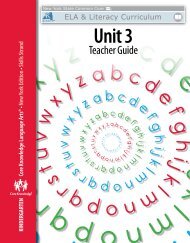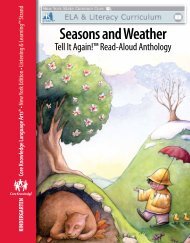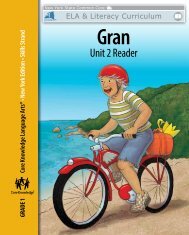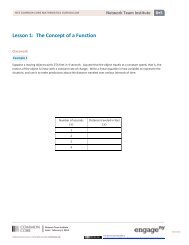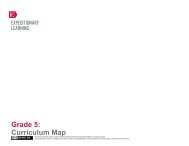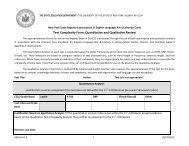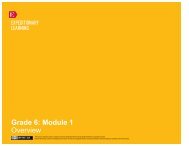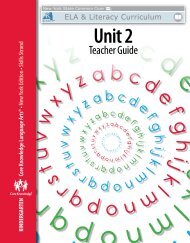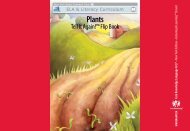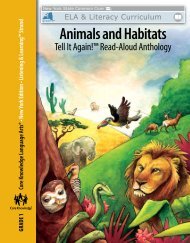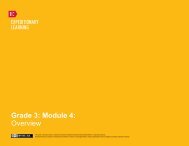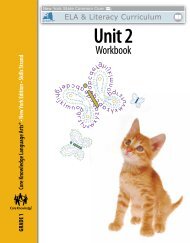Grade 4 ELA Module 1, Unit 3, Lesson 3 - EngageNY
Grade 4 ELA Module 1, Unit 3, Lesson 3 - EngageNY
Grade 4 ELA Module 1, Unit 3, Lesson 3 - EngageNY
Create successful ePaper yourself
Turn your PDF publications into a flip-book with our unique Google optimized e-Paper software.
GRADE 4: MODULE 1: UNIT 3: LESSON 3<br />
Close Read:<br />
Communication and Conflict Resolution Strategies<br />
Work Time<br />
A. Reviewing Close Reading (15 minutes)<br />
• Remind the students of the close reading they did of the Great Law of Peace (Iroquois Constitution) in <strong>Unit</strong> 1, and of sections<br />
of Eagle Song during <strong>Unit</strong> 2. Explain to students that they will be close reading a new article today in order to better<br />
understand how to solve problems in school.<br />
• Ask students to find a partner. With this person, they should discuss their process of reading the Great Law of Peace closely.<br />
Distribute index cards. Advise the class: “Be sure to explain what you did first, next, and any strategies you used while<br />
reading. Once you and your partner have shared, write down on the index card the skills you used as close readers.” Give the<br />
students 10 minutes to discuss how to close read and record the steps on their index cards.<br />
• When the students have finished their discussions, invite students to share the things they did yesterday when they read<br />
closely.<br />
• After the students share ideas, check that all the steps were discussed by re-orienting students to the Close Readers Do<br />
These Things anchor chart they created in <strong>Unit</strong> 1.<br />
Note: This is not a rigid set of steps; at this point students may be realizing that different texts require slightly different<br />
approaches, and that close readers can use many strategies. But be sure that students basically describe the following<br />
process:<br />
• Read aloud if the text is really hard.<br />
• Read the whole thing slowly and think about the central message or main idea.<br />
• Reread passages one chunk at a time.<br />
• Underline things that you know about.<br />
• Circle words that you do not know.<br />
• Try to figure out words from the context.<br />
• Talk about what you understand and what you don’t.<br />
• State the gist or message of the paragraph in the margin.<br />
• Reread a third time in order to find answers to questions and revise and record.<br />
Meeting Students’ Needs<br />
• For ELLs, consider posting<br />
nonlinguistic symbols for some of<br />
the key vocabulary terms in the<br />
targets.<br />
• For fluent readers, focus on context<br />
clues.<br />
• For students still developing reading<br />
fluency, focus on word attack<br />
strategies, and then move to context<br />
clues, if needed.<br />
• Consider writing and displaying<br />
steps for multistep directions. ELLs<br />
can return to steps to make sure<br />
they are on track.<br />
Copyright © 2013 by Expeditionary Learning, New York, NY. All Rights Reserved. NYS Common Core <strong>ELA</strong> Curriculum • G4:M1:U3:L3 • June 2013 • 4



